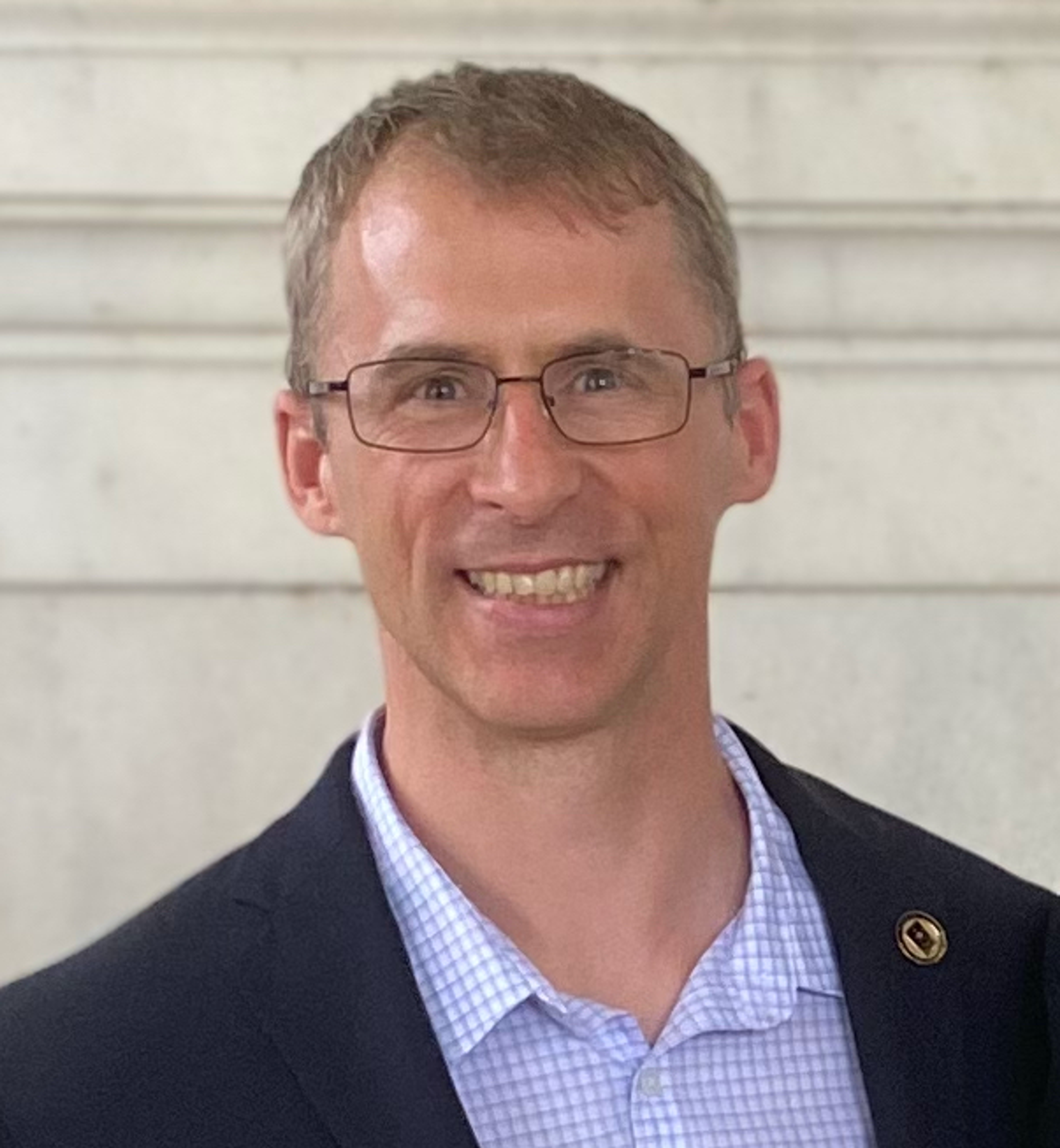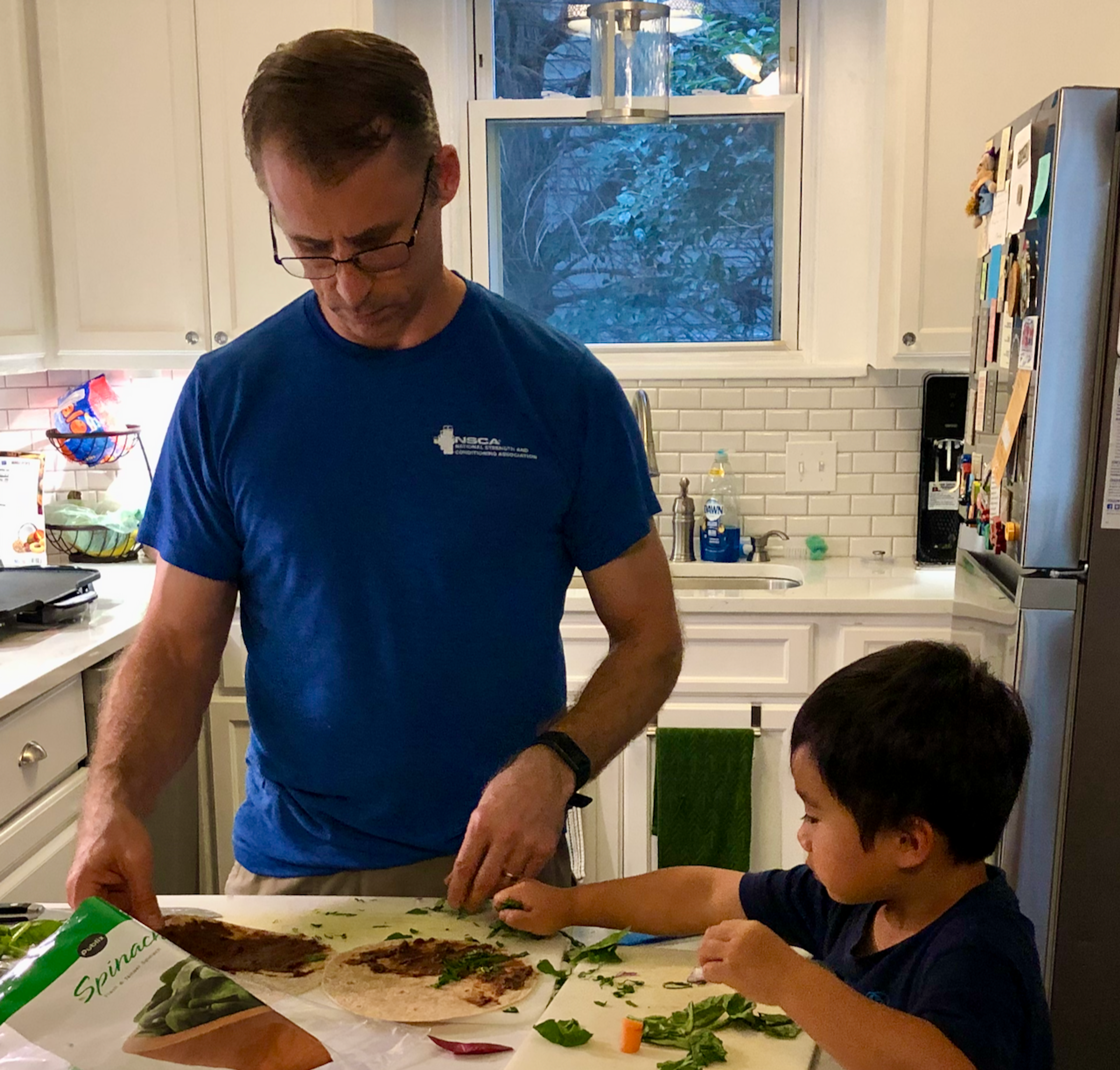This profile is part of the "People of Giving What We Can" series.

We recently spoke with Peter Jensen, a retired U.S. Army officer living in Richmond, Virginia. He shared with us his effective giving story, what motivates him to give, and some books/articles/stories that he found particularly impactful.
Tell us about yourself. What keeps you busy and what makes you tick?
I am a former U.S. Army officer and recently retired after 22 years of military service. I am now a few years into a second career in corporate leadership training where I focus on program development and project management.
While in the Army, I earned my PhD and was faculty at the U.S. Military Academy, which fostered a passion for research. I’ve continued to research and publish, and I also mentor graduate students — especially those interested in working with military populations.
My other job is being husband to the love of my life and father to our wonderful young son!
Tell us about your effective giving journey.
I heard a podcast with Toby Ord a couple years ago and was immediately inspired by the values and process of Giving What We Can. For a year, I donated each month with the goal of 10% of my income going to Giving What We Can’s top charities. When I saw that I could reliably sustain donating 10% of my income each month, I took the lifetime pledge.
Why do you give? (What motivated you to give originally and what keeps you motivated now?)
The concept of helping those who are tackling the world’s toughest problems and suffering the most resonates deeply for me. In my travels with the U.S. military, I visited many locations and saw people struggling terribly with poverty and conflict. Working alongside so many people from these areas of the world affected me greatly: I wanted to help but did not know how. Donating through Giving What We Can gave me the most confidence that I was helping others in the world and making a difference in the lives of those in the most difficult situations.
While serving in the U.S. military, I once had a commander who asked me how effective I thought my unit had been in accomplishing their several-month combat mission. I offered him some broad metrics that I thought indicated success but he continued to press me for details: how did I come up with my metrics and what difference did I think my actions had truly made on the security, welfare and prosperity of the people within my area of operations?
I didn’t have any answers for him at the time, but the idea of measuring success and impact stuck with me. Throughout the rest of my military career, I continued trying to find ways to measure the effectiveness of military actions and the broader impact on the people where these military actions occurred.
Much later, coming across Giving What We Can and the ways they directed donations to causes with the most impact was both exciting and a relief. Here was a way that I could help make a difference and have confidence that real good was being accomplished!
Why did you take the Giving What We Can pledge?
I was attracted to and impressed with the idea of lifetime commitment and openly communicating about giving. The Giving What We Can pledge requires a person to “lead by example” and embody their values through action. That stirs my memories of military service and the ideals I tried to exhibit. The pledge also gives a chance to inspire others through your actions.
What are the issues in the world that you care most deeply about?
Poverty is the issue I find most heartbreaking, as well as frustrating, because there is so much that could be done to address this terrible problem. I am also inspired by longtermism in that we in the present have a moral obligation to take actions that consider the vast numbers of people who will live after us.
Which organizations do you give to (and why)?
I split my donations equally among the four main cause areas highlighted on Giving What We Can’s homepage: global health and development, improving animal welfare, safeguarding the long-term future, and advocating for effective altruism.
Although organizations focusing on extreme poverty and longtermism resonate the most with me, I recognize that one of the strong points of Giving What We Can is that the recommended causes have been rigorously vetted as areas where donations are most needed and most impactful. This has inspired me to give equally to each cause area fund.
Do you ever find it difficult to give?
No, I’m very lucky to have the resources to give without difficulty. Also, because I make the donations an automatic billing feature and part of my personal budget, I don’t have to put my decision-making, willpower, and budgeting skills into use every month. I’ve made giving just a regular part of my life, like any other expense in my budget.
Do you try to effect change in any other way? (e.g. volunteering, advocacy)
Indirectly, I post my pledge status on social media. I haven’t done any direct work on effective altruism causes yet, but I’d like to connect with more people in the community to more actively participate.
What effective giving tips would you like to share with the GWWC community?
Build a spreadsheet to track your budget and you might be surprised where you are spending your money and how much you can save to donate! My favorite example of budget tracking is seeing where money spent on small things — like fancy coffee drinks each day or some other minor luxury — adds up to far more than you initially realize. This can be a great way to start budgeting your way towards making your 10% pledge.
Any other suggestions for people considering the pledge?
Start slow and small to build a habit of giving. Tell others that you give. Build it into your identity.
What are your visions for the future?
I want to expand my efforts to the broader Effective Altruism (EA) community and see where I can do more work in this space. The more I learn about EA, the more I see a group of people with values that I share.
Have any books, documentaries, articles or studies significantly changed the way you see giving?
- “We are in triage every second of every day” by Holly Elmore is such an inspirational and gripping article.
- Peter Singer’s “drowning child” thought experiment and story is also very moving.
- Toby Ord’s “The Precipice'' was startling and brought the concepts of longtermism to the forefront of my thinking and values.
- Will MacAskill’s “Doing Good Better” is excellent, as well as any podcast where he is interviewed about EA.

Peter cooking with his son
This post is part of the “People of Giving What We Can" series, which profiles a selection of the Giving What We Can community. The Giving What We Can community is comprised of people from all walks of life, with different perspectives and motivations for giving – all united by their desire to make a significant commitment to use their income to effectively help others.
-Read more member stories.
-Share your effective giving story to help inspire others to give more, and more effectively.
For more information about Giving What We Can, we recommend you check out our frequently asked questions, our effective giving recommendations, our giving pledges, and our homepage.